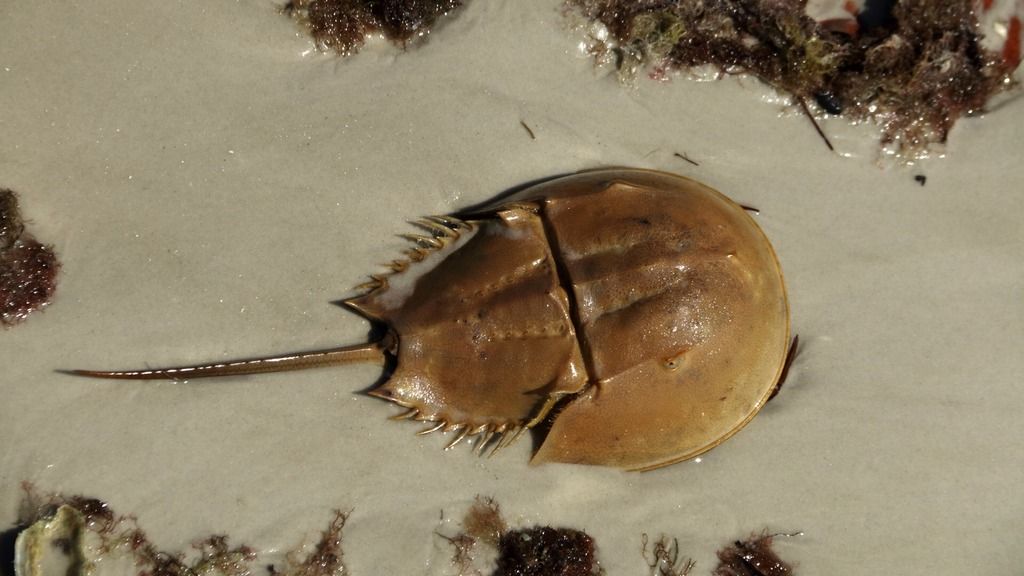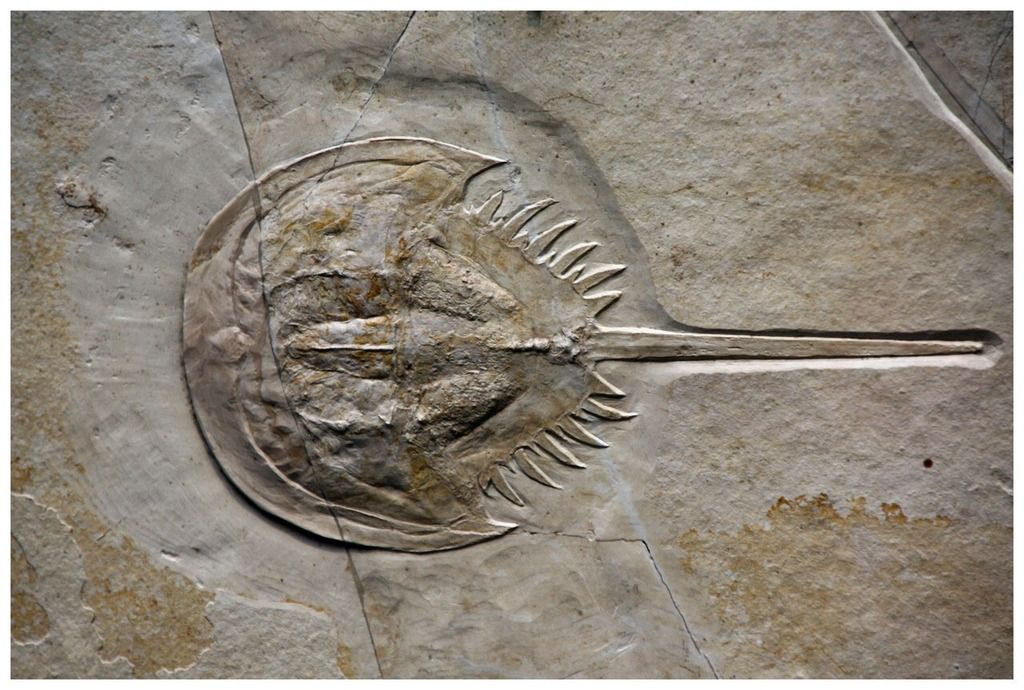Barbarian chuckles:
The "map" doesn't show any such thing, either. As I pointed out, the assumption of a young Earth is neither Biblical nor supported by the evidence. As I said, the horseshoe crab is a great demonstration of gradual evolution, since no living species has been found in the fossil record, even though there have been horseshoe crabs for a very long time.
Lack of such fossils is pretty good evidence. If you think such fossils exist, it's up to you to show that they do. I've pointed this out to scores of creationists, and so far, no one has found any. I'm not holding my breath, but I'll look at whatever you find.
Great example. Nat. Geographic (a popular magazine, not a scientific journal) bought a fossil and put it in their magazine, even though scientists urged them to wait for peer review. They ignored the warnings, and published anyway. And then, when scientists analyzed it, they found it was a combination of two (very significant and valuable) fossils which had been carefully fitted together.
A great example of why science is more reliable than other ways of understanding the world.
The Czerkases contacted paleontologist Phil Currie, who contacted the National Geographic Society. Currie agreed to study the fossil on condition that it was eventually returned to China. The National Geographic Society intended to get the fossil formally published in the peer-reviewed science journal Nature, and then follow up immediately with a press conference and an issue of National Geographic.[7] Editor Bill Allen asked that all members of the project keep the fossil secret, so that the magazine would have a scoop on the story.
Slade and the Czerkases intended the fossil to be the "crown jewel" of the Dinosaur Museum and planned to keep it on display there for five years. Sloan says that he flew to Utah in the spring of 1999 to convince Stephen Czerkas to return the fossil to China immediately after publication, or he would not write about it for National Geographic and Currie would not work on it. Czerkas then agreed. Currie then contacted the Institute of Vertebrate Paleontology and Paleoanthropology in Beijing, and National Geographic flew the IVPP's Xu Xing to Utah to be part of the "Archaeoraptor" team.[8]
During the initial examination of the fossil on March 6, 1999 it had already become clear to Currie that the left and right feet mirrored each other perfectly and that the fossil had been completed by using both slab and counterslab. He also noticed no connection could be seen between the tail and the body. In July 1999, Currie and the Czerkases brought the fossil to the High-Resolution X-ray CT Facility of the University of Texas (Austin) founded and operated by Dr. Timothy Rowe to make CT scans. Rowe, having made the scans on July 29, determined that they indicated that the bottom fragments, showing the tail and the lower legs, were not part of the larger fossil. He informed the Czerkases on August 2 that there was a chance of the whole being a fraud. During a subsequent discussion Rowe and Currie were pressured by the Czerkases to keep their reservations private.[8]
Currie in the first week of September sent his preparator, Kevin Aulenback, to the Dinosaur Museum in Blanding to prepare the fossil for better study. Aulenback concluded that the fossil was "a composite specimen of at least 3 specimens...with a maximum...of five...separate specimens", but the Czerkases angrily denied this and Aulenbeck only reported this to Currie. Currie did not inform National Geographic of these problems.[8]
On August 13, 1999, the team submitted a manuscript titled "A New Toothed Bird With a Dromaeosaur-like Tail" under the names of Stephen Czerkas, Currie, Rowe, and Xu, to the journal Nature in London. The paper mentions in two places, and includes a figure illustrating the point that, one of the legs and the tail are counterparts that were composited into the main slab.[8]
On August 20 Nature rejected the paper, indicating to the Czerkases that National Geographic had refused to delay publication, leaving too little time for peer review. The authors then submitted the paper to Science, which sent it out for peer review. Two reviewers informed Science that "the specimen was smuggled out of China and illegally purchased" and that the fossil had been "doctored" in China "to enhance its value." Science then rejected the paper. According to Sloan, the Czerkases did not inform National Geographic about the details of the two rejections.[7]
By that time the November issue of National Geographic was already in preparation for printing, but "Archaeoraptor" was never formally published in any peer-reviewed journal.
National Geographic went ahead and published without peer review.
https://en.wikipedia.org/wiki/Archaeoraptor
And now you know the truth. Not exactly the story you were told, is it?






 That's enough.
That's enough.
